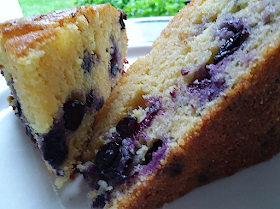I grew up in northwest Indiana, a stone's throw from Chicago. It was the best of both worlds, small-town rural suburbia and big city highlights.
It was not until I began to teach in a more central part of the state that I discovered "Hoosier" and Hoosier menus. Ham and beans was one such cuisine. It was often served in the school cafeteria with a piece of cornbread or a yeast roll. It was delicious.
It is stick-to-your ribs comfort food at its best. Warm and starchy. Redolent with smoky ham flavor. It uses the most simple of ingredients one usually has on hand. Sometimes I make a cheat version and just use canned seasoned butter beans and throw in some chopped ham.
But it's fun to play with different raw beans and soak them overnight until they puff up.
My ham preference, if I can find them, is smoked whole ham shanks. It has been several years since I found any grocery store that stocked them. Instead, I now use smoked ham hocks which are more available. They carry a ton of flavor, but not much meat, so I buy a small ham steak that I chop up to add later.
This is basically a bean soup but with the "soupy" part.
- 16 - 20 oz. dried white beans (Navy, Northern, etc)
- 2 smoked ham hocks
- 1 onion, halved
- 1-2 whole cloves
- 2 carrots, sliced and diced
- 2 celery ribs, sliced and diced
- 1 medium garlic clove, peeled, smashed finely diced or pressed
- Salt and pepper to taste
- Tabasco to taste
- Worcestershire sauce to taste
- 1 small ham steak (or a thick slice of deli ham)
- Smoked paprika (optional)
Soak the beans: The day or night before, go over your dried beans and remove any "stones" or odd-looking beans. Place them in a colander. Now place the colander inside a large bowl. Fill with cold water until the beans are covered. Change the water several times. The beans will almost double in size.
I like to wash my ham hocks. I give them a good rinse under hot water. Then I place then in a sieve and slowly pour boiling water over them. Why? Well, they're just gross looking.
Make the stock: Place washed hocks in a pan. Cut the onion in half and stud with one or two whole cloves. Add to pan. Fill pan with water just until it covers everything. Sometimes, I throw in a can of chicken stock. Cover and bring to a boil. Reduce heat and simmer for a good hour or so. Remove the hocks and allow to cool. Discard onion. Strain the stock.
Now add your beans to the pot. Slice and dice the other half of onion. Add carrots and celery. Mix. Remove meat from the hocks. Cut up. Cut up the ham slice. Add meat to the pot. Bring to just a boil. Remove any scum that floats to the top. Reduce heat and simmer for 1-2 hours.
After about an hour, give the ham and beans a taste. I like to add a few shakes of Tabasco Sauce and 1-2 teaspoons of Worcestershire. If they are not "smoky" enough, give a few shakes of smoked paprika.
If you need to add more liquid, add a bit of water or canned chicken stock.
Towards the end of cooking, note their consistency. If you like them thick, mash some against the side of the pan. Or add one tablespoon of soft butter to one tablespoon all-purpose flour. Mix well and drop by teaspoonfuls into the stew. Cover and simmer until thickened.
Traditionally, ham and beans is served with cornbread and a bit of diced onion on the top for garnish.
This is not my photo, but it shows the consistency you are looking for:










































